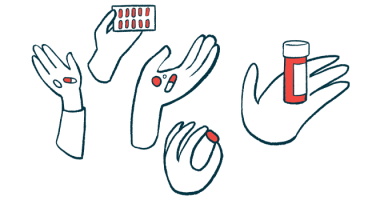Report: Immunomodulatory Type 1 Interferons May Spark NMOSD

The use of immunomodulatory therapy based on type 1 interferons (IFNs) may trigger neuromyelitis optica spectrum disorder (NMOSD), according to a new case report.
Researchers in China described the case of a 24-year-old man diagnosed with the autoimmune disease after receiving treatment with IFN-alpha, a type 1 interferon.
“Our findings highlight the potential pathogenic [disease-causing] risk of NMOSD of [IFN-alpha] treatment,” the team wrote. “We present this case report and review of the published literature to alert physicians of this rare yet devastating consequence” of such type 1 interferons therapy.
“Monitoring early manifestations of NMOSD during or even after [IFN-alpha] treatment is vital,” they added.
The study, “Case Report: Interferon-Alpha-Induced Neuromyelitis Optica Spectrum Disorder,” was published in the journal Frontiers in Neurology.
NMOSD is characterized by a wrongful immune system response against proteins in cells that support the nervous system. That immune system attack triggers inflammation in the spinal cord, and in the optic nerve, which connects the eyes to the brain. Most patients have high levels of antibodies against the AQP4 protein.
Therapies that can dampen the body’s immune response, such as type 1 interferons (IFNs), are commonly prescribed to people with autoimmune diseases. This includes patients with multiple sclerosis, an inflammatory disease of the central nervous system (CNS), comprised of the brain and spinal cord.
Treatment with type 1 IFNs has been deemed detrimental for NMOSD patients. But whether it can actually induce the disease had remained unclear.
Now, researchers report on a man in China found to have NMOSD caused by IFN-alpha.
The patient was first treated at the hospital after experiencing worsening headaches and ringing or other noises in the right ear. Such ringing is a hallmark of a condition called tinnitus.
Upon examination, no neurological deficit was found and the man’s medical history was uneventful. A brain MRI, performed one month later, showed no abnormalities.
After developing nausea and blurred vision, the patient was admitted to the hospital.
Neurological examination showed neck stiffness and swelling of the optic disc, a small, circular region where the optic nerve enters the back of the eye. Although a brain MRI showed no lesion to the optic nerve, the patient showed several imaging signs of intracranial hypertension, when pressure builds up around the brain.
Analysis of the cerebrospinal fluid (CSF), the fluid surrounding the brain and spinal cord, was normal. But an MRI ultimately led to a diagnosis of cerebral venous sinus thrombosis, which occurs when a blood clot forms in the brain’s venous sinuses, preventing blood drainage out of the brain.
Lab tests revealed no altered parameters other than thrombocytosis, which is an overproduction of platelets. A genetic analysis revealed a mutation in the JAK2 gene called V617F. This mutation has been reported in disorders associated with blood clots.
A bone marrow biopsy showed increased numbers of megakaryocytes, the precursor cells of platelets. The patient was thus diagnosed with essential thrombocythemia, a disorder characterized by too many platelets, with a high risk of blood clot formation. He received treatment with type 1 IFN, specifically IFN-alpha-2b.
The number of platelets was normalized and his headache and blurred vision gradually subsided. Improvements in blood flow of the brain also were observed.
“The patient had no side effects of [IFN-alpha] treatment, and his condition remained stable,” the researchers wrote.
However, 18 months later, he developed persistent hiccups, nausea, and vomiting for eight days, followed by urinary retention. He failed to respond to medications to ease nausea and vomiting, and 14 days later, he felt his extremities become numb and experienced tingling around both calves in the legs.
The patient was transferred to the neurology department and evaluated. Spinal and brain MRI scans showed signs of inflammation and swelling that extended from the medulla — the bottom-most part of the brain — to the entire spinal cord.
Blood and CSF tests for several self-reacting antibodies revealed the man was positive for AQP4 and antinuclear (ANA) antibodies. These results confirmed the NMOSD diagnosis.
The IFN-alpha-2b treatment was suspended immediately.
The patient then was given pulse therapy with the anti-inflammatory methylprednisolone, but no improvement was observed after six days.
Treatment with immunoglobulins — also known as antibodies — was delivered intravenously, or into the vein, for five days. That was followed by the immunosuppressant mycophenolate mofetil (sold as CellCept) and a low dose of the steroid prednisolone. In addition, the patient received hydroxyurea and aspirin to control his essential thrombocythemia.
His condition gradually improved, and urinary retention and lower limb weakness diminished by day 27.
He was discharged five days later, with only a slight limb numbness.
One year later, the patient remained symptom- and relapse-free. His score on the Expanded Disability Status Scale was zero, meaning no sign of disability.
No antibodies against AQP4 or ANA were detected. The man continued treatment with mycophenolate mofetil and low-dose prednisolone. Until December 2021, he remained without symptoms, relapses, and side effects.
Overall, this case highlights the potential for treatment with type 1 interferons to trigger NMOSD, the researchers noted.
“Given the high disability rates of this rare drug-induced disease, it is crucial to monitor the early manifestations of NMOSD during [IFN-alpha] treatment,” they concluded.








